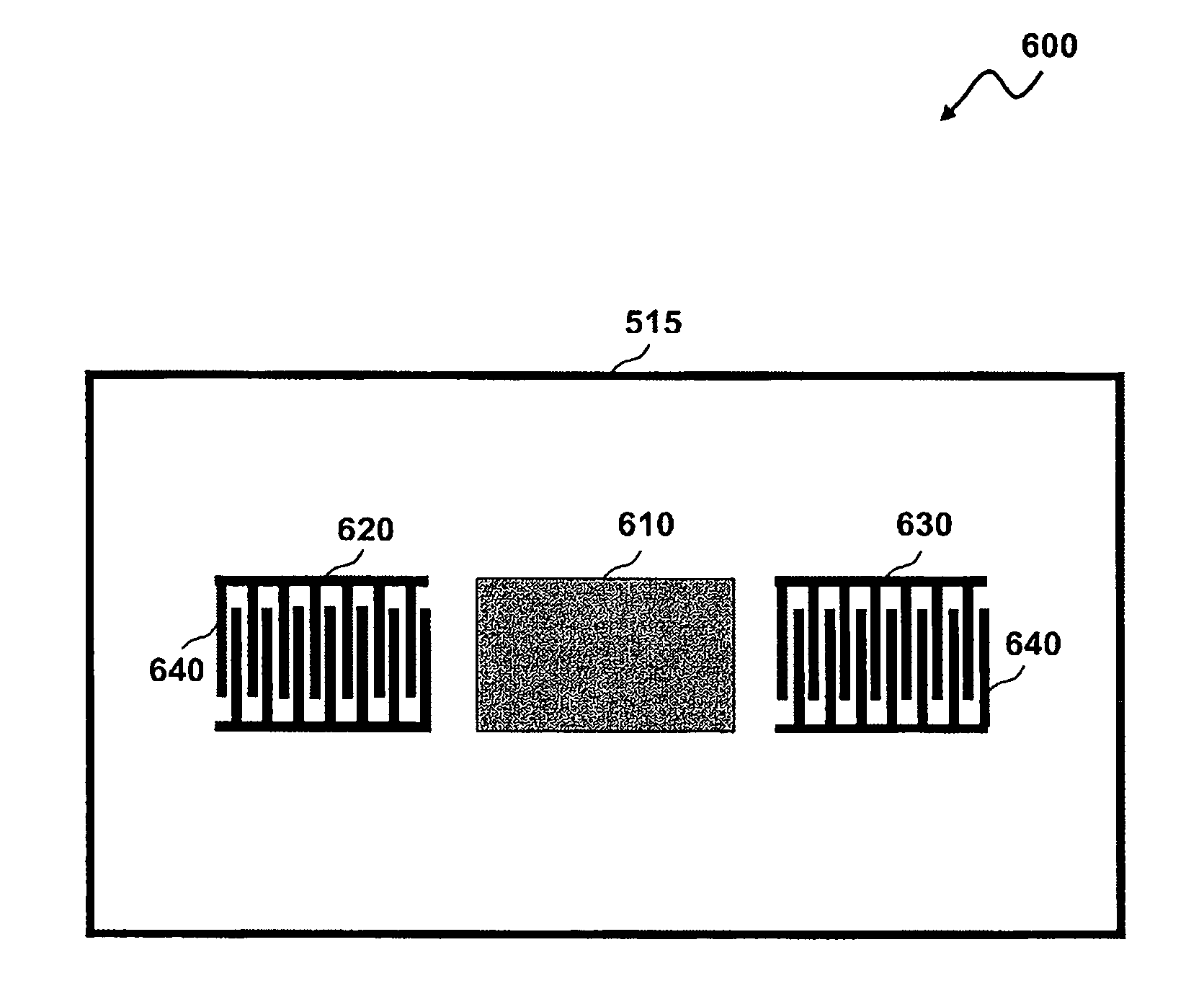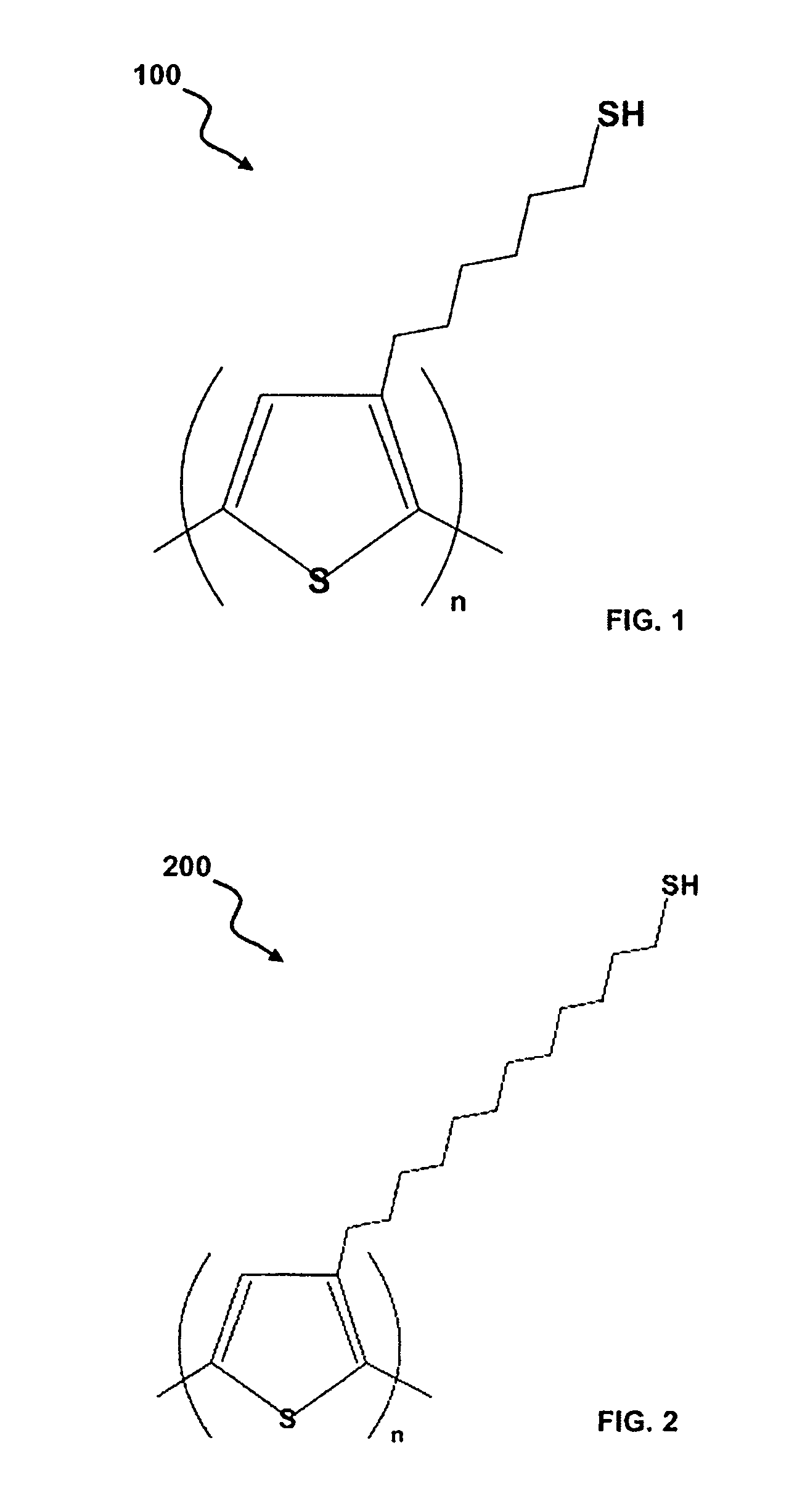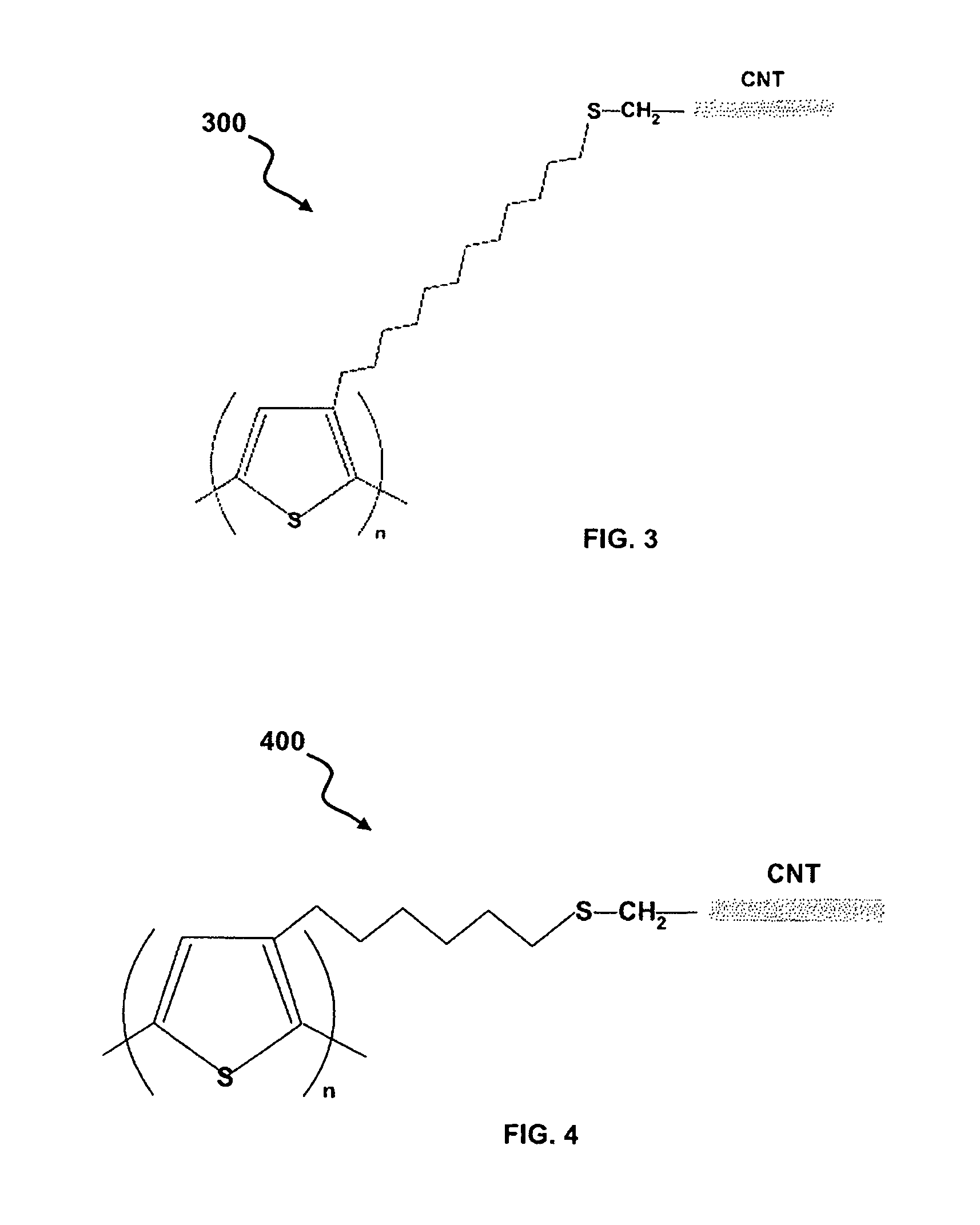Matrix nanocomposite sensing film for saw/baw based hydrogen sulphide sensor and method for making same
a technology of matrix nanocomposite and sensing film, which is applied in the direction of solid-state devices, instruments, material analysis, etc., can solve the problems of depressing the nervous system, flammability, irritating, and toxic gas, and improve the sensitivity of matrix nanocomposite-based sensing film to h2s at room temperature, and achieve the effect of effective detection of hydrogen sulphid
- Summary
- Abstract
- Description
- Claims
- Application Information
AI Technical Summary
Benefits of technology
Problems solved by technology
Method used
Image
Examples
Embodiment Construction
[0024]The particular values and configurations discussed in these non-limiting examples can be varied and are cited merely to illustrate at least one embodiment and are not intended to limit the scope thereof.
[0025]The present embodiment can utilize three types of thiolated carbon nanotubes such as thiolated carbon nanotube with mercapto groups connected to the tubular structure through one methylene group, (i.e. CNT-CH2—SH), thiolated carbon nanotubes with the linkage between the CNT and alkane thiol by a amide group, (i.e. CNT-CO—NH (CH2)—SH), and a network of two thiolated carbon nanotubes with the thioester group, (i.e. CNT-CH2—S—CS—CNT). The thiolated carbon nanotubes or network of thiolated carbon nanotubes can be incorporated into polymeric materials or in a ceramic nanocrystalline to form matrix nanocomposites. The polymers which are used are: poly[3-(6-mercaptohexyl)thiophene], poly[3-(12-mercaptododecyl)thiophene], poly[3-(12-mercaptododecyl)thiophene] functionalized with ...
PUM
| Property | Measurement | Unit |
|---|---|---|
| Electrical conductor | aaaaa | aaaaa |
| Sensitivity | aaaaa | aaaaa |
Abstract
Description
Claims
Application Information
 Login to View More
Login to View More - R&D
- Intellectual Property
- Life Sciences
- Materials
- Tech Scout
- Unparalleled Data Quality
- Higher Quality Content
- 60% Fewer Hallucinations
Browse by: Latest US Patents, China's latest patents, Technical Efficacy Thesaurus, Application Domain, Technology Topic, Popular Technical Reports.
© 2025 PatSnap. All rights reserved.Legal|Privacy policy|Modern Slavery Act Transparency Statement|Sitemap|About US| Contact US: help@patsnap.com



